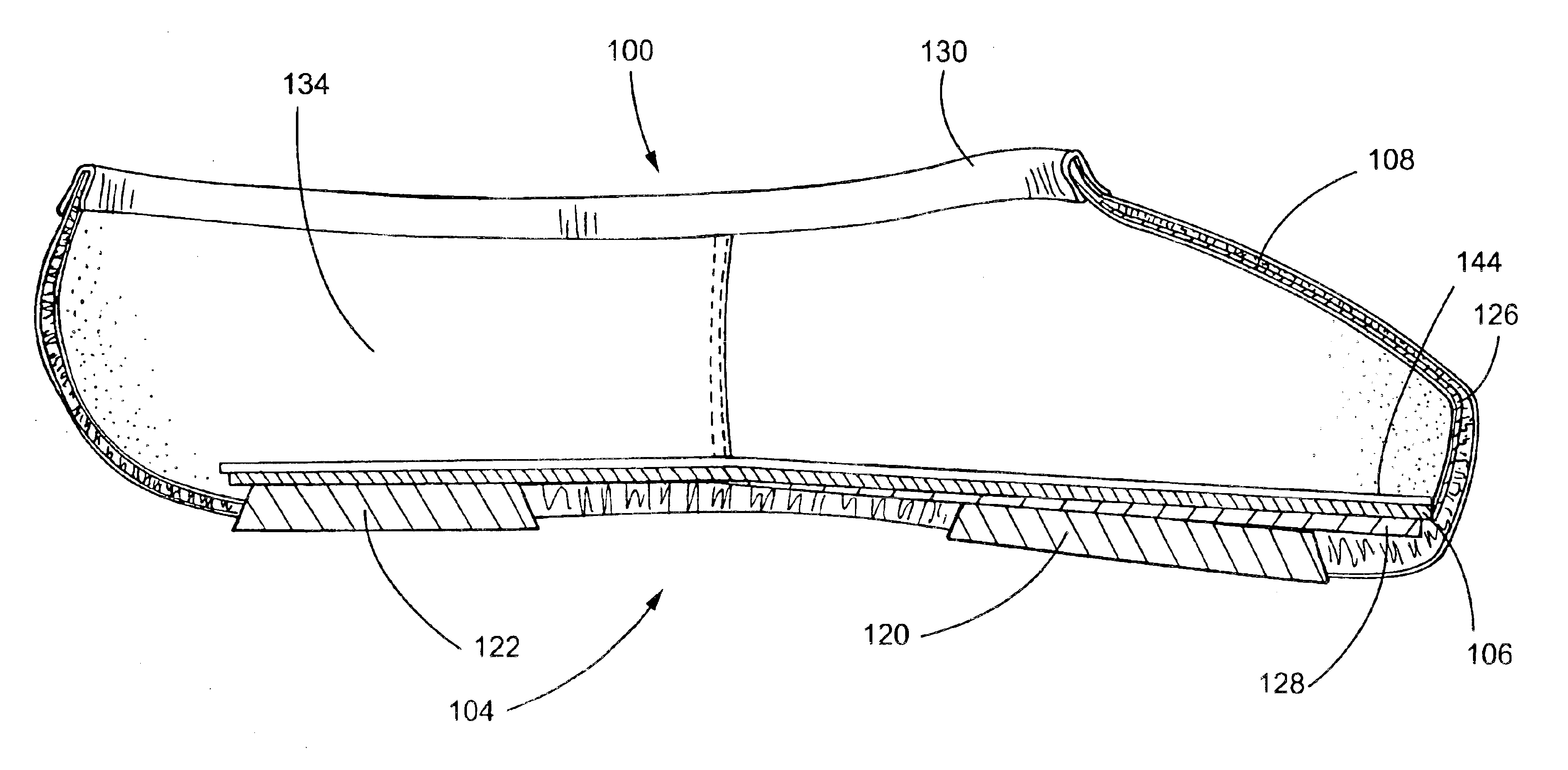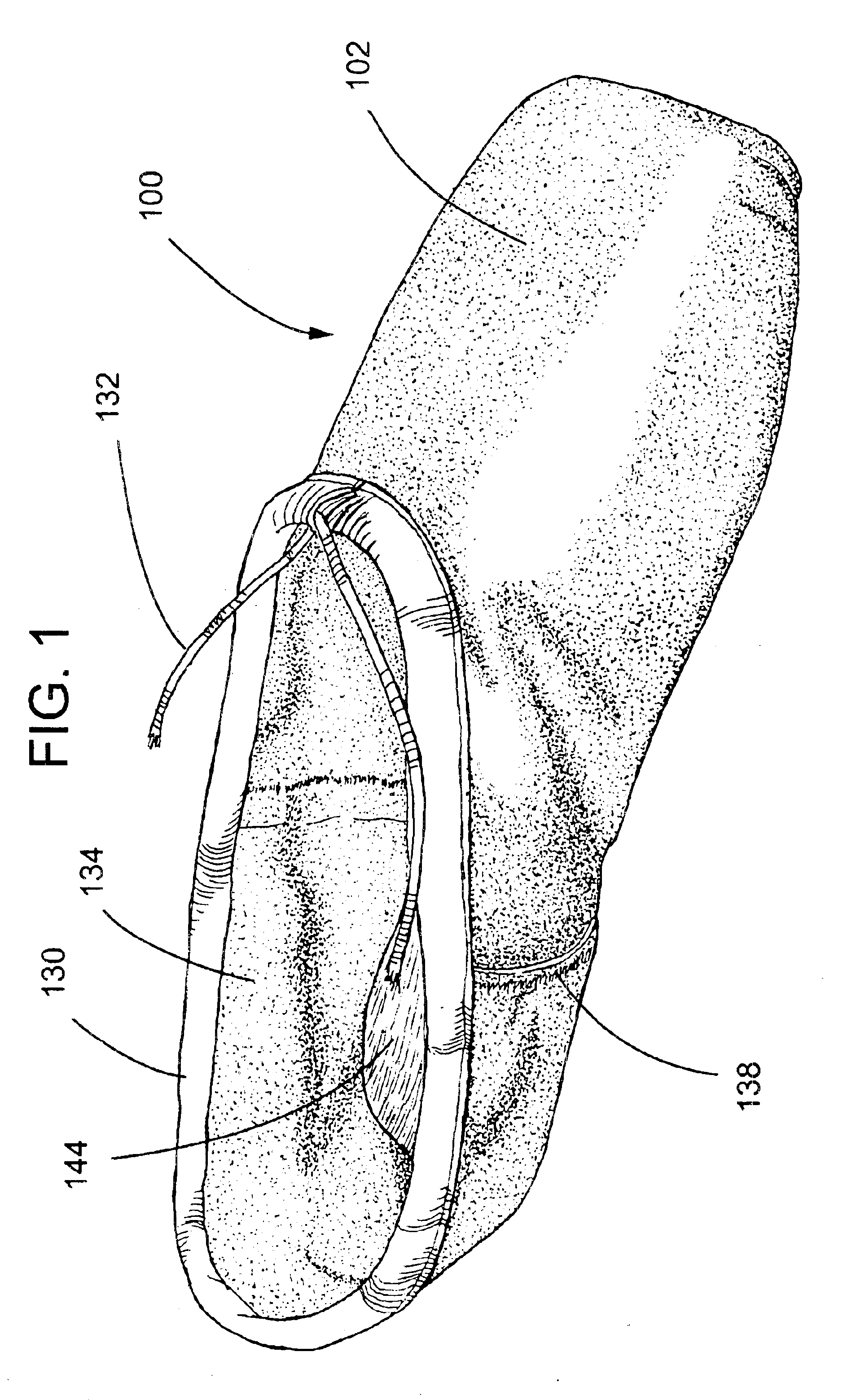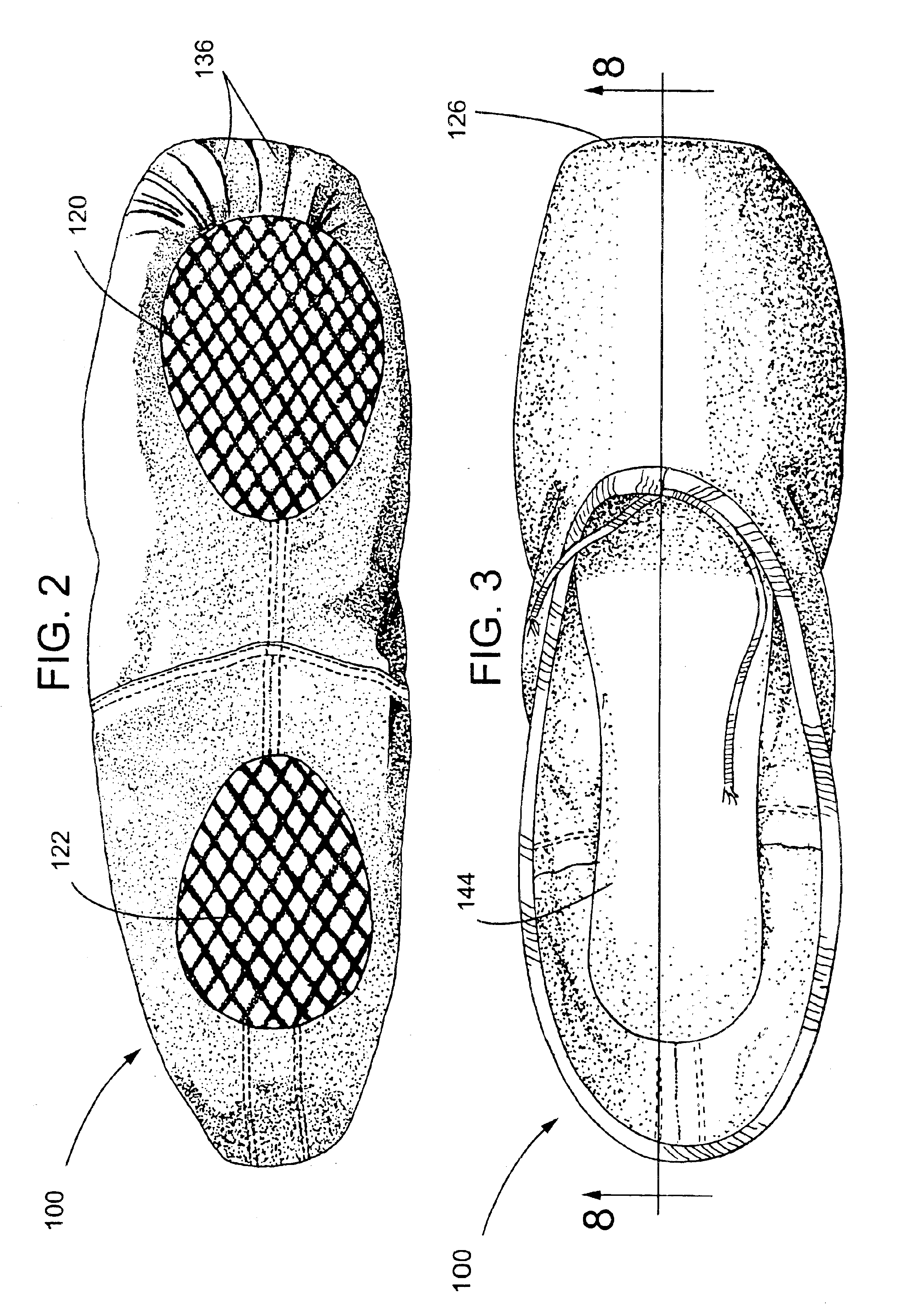Dance shoe
- Summary
- Abstract
- Description
- Claims
- Application Information
AI Technical Summary
Benefits of technology
Problems solved by technology
Method used
Image
Examples
Embodiment Construction
[0023]A pointe shoe 100 according to the invention is shown in FIGS. 1-8. Referring to FIGS. 1, 3 and 8, the pointe shoe 100 has an upper 102, a sole 104, a shank 106 and a toe box 108. The upper 102 surrounds the upper portion of the foot. The upper 102 may be made of a satin material, canvas, leather or various other soft materials. The sole 104 is a split sole and has a front sole 120 and a rear sole 122. The soles 120, 122 are located on the bottom of the shoe. Specifically, the front sole 120 may be located below the ball of the dancer's foot and the rear sole 122 may be located below the heel of the dancer's foot. The soles 120, 122 may be attached to the upper 102 with thread or adhesive, or a combination thereof.
[0024]The shank 106 is a stiff material on the inside of shoe which extends along the bottom of the dancer's foot. The shank 106 provides support for dancing on pointe. The shank may be made from redboard, other fiber boards, leather, or a polymer, such as, a plastic...
PUM
 Login to View More
Login to View More Abstract
Description
Claims
Application Information
 Login to View More
Login to View More - R&D
- Intellectual Property
- Life Sciences
- Materials
- Tech Scout
- Unparalleled Data Quality
- Higher Quality Content
- 60% Fewer Hallucinations
Browse by: Latest US Patents, China's latest patents, Technical Efficacy Thesaurus, Application Domain, Technology Topic, Popular Technical Reports.
© 2025 PatSnap. All rights reserved.Legal|Privacy policy|Modern Slavery Act Transparency Statement|Sitemap|About US| Contact US: help@patsnap.com



